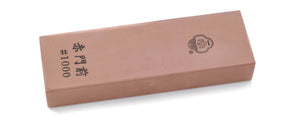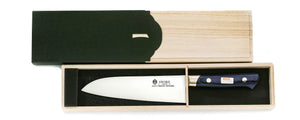What is Rockwell Hardness
The Rockwell Hardness scale was developed by Hugh and Stanley Rockwell in 1914. In relation to kitchen knives and knife steel, we use the Rockwell C Scale (HRC) to determine how hard a knife steel is.
In short, a small spherical diamond is pressed into the steel under a specific load to determine how hard the steel is. This method is used because it is quick, easy to repeat and non-destructive to the material.
How does Rockwell Hardness affect a knife
Below 54 Rockwell is a soft knife: If a knife is too soft, the edge will wear out very quickly and may even begin to roll and become misalligned. It will be easier to bring the edge back, but again it will wear away quickly.
Above 62 Rockwell is a hard knife: If a knife is hard, the edge will become brittle and easy to chip. It will also be harder to sharpen once the edge wears away.
The balance between hard and soft is what every knifemaker tries to achieve. Knifemakers do this by adding multiple elements to the steel such as carbon which makes it harder, and silicon or tungsten to add toughness. Ultimately the final heat treatment will determine the overall hardness.
Western Knives tend to be around 55-58 Rockwell, offering a medium hardness with ease of re-sharpening.
Japanese Knives tend to start around 58 Rockwell and go to 62 Rockwell or even 64 Rockwell (Special Steels) giving you a very sharp edge that is a little brittle, but won't need sharpening as often as it's German counterparts.
Is blade hardness the most important thing?
In short, no. Blade hardness shouldn't be the deciding factor in purchasing a knife. There a many other factors that influence the overall performance such as the steel used, the production method, and the heat treatment. At Sakai Ichimonji we believe that the quality of the heat treatment is the most important factor in whether you have a good knife or not.































